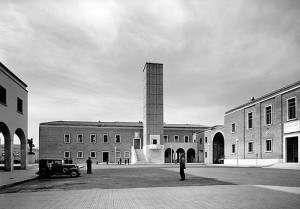The Great Depression ravaged the economies of the United States and Germany. In an attempt to recover the United States and Germany implemented public works projects to improve not only unemployment rates, but also industry levels and infrastructure. These projects were also used as forms of government propaganda to revive national pride. In Schivelbusch’s chapter on public works he highlights public projects of the United States and Germany as well as the less successful public works attempts of the Soviet Union and Fascist Italy.
In 1933, FDR signed a legislative act that created the Tennessee Valley Authority. The goal of the TVA was to promote regional development in Tennessee, North Carolina, Kentucky as well as other disenfranchised portions of the South. (( Wolfgang Schivelbusch. “Public Works” in Three New Deals. (New York: Picador, 2006) 153.)). This project sought to integrate technology and agriculture to develop water resources, such as building dams, and to promote land reform that focused on reforesting areas and improving soil quality. ((Wolfgang Schivelbusch. “Public Works” in Three New Deals, 156)).
One of Germany’s public works project was the construction of the Autobahn. Like the United States this construction project also implemented newly-developed technology aimed at modernizing the country. Soon after Hitler rose to power, he planned the construction of a network of highways throughout Germany, with portions to be completed by 1935. ((Wolfgang Schivelbusch. “Public Works” in Three New Deals, 172)). The planners of the Autobahn placed great emphasis on the road’s relationship to the surrounding landscape. They seemed to endorse that the road should emphasize the uniqueness of the landscape and fit in seamlessly with the road’s surrounding terrain, however whether this goal was propaganda or represented actual intentions is something historians debate. ((Wolfgang Schivelbusch. “Public Works” in Three New Deals, 174-175.)). The use of such vague vocabulary by head planners, such as Todt, led to misunderstandings between the differences of “landscape creation” verses landscape preservation. For example, people who protested the construction of the Autobahn for conservation reasons were characterized by the Autobahn planning committee as “faint-hearted nature lovers”. ((Wolfgang Schivelbusch. “Public Works” in Three New Deals, 176-177.)).
Do you think that Todt’s definition of “landscape creation” (pgs 176-177) contradicted the aims of the back-to-the-land movement as Schivelbusch discusses in chapter 4?

